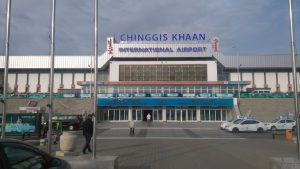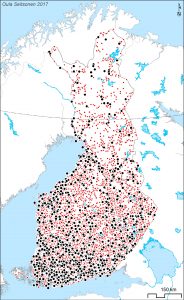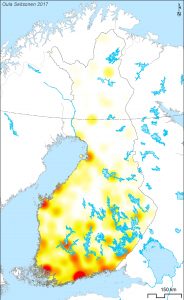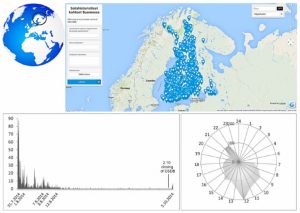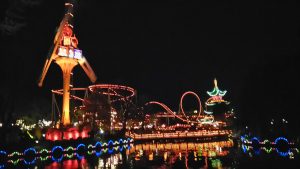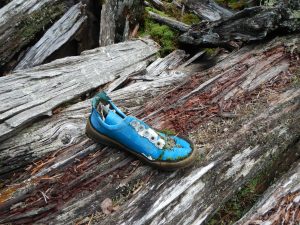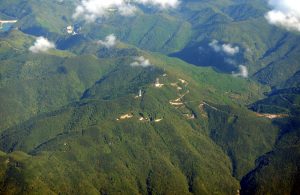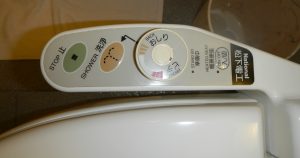A memorial cross will be raised at the German-run WWII PoW camp at Inari Kankiniemi to commemorate the people who perished at the camp, on Saturday October 10, 2016, 3 pm. Orthodox church of Lapland and a team of volunteers will raise the cross, and there will be a memorial service following the Skolt Sámi tradition. Memorial service is open to the public. Oula Seitsonen and Vesa-Pekka Herva will be taking part in the service on the behalf of our project.
We studied the Kankiniemi camp with archaeological mapping and excavations in 2015: two trash pits and some stone structures were excavated. As a peculiar feature a heart carved into a pine tree was observed outside the barbwire fence of the PoW camp, next to the guard path.
Kankiniemi PoW camp functioned in 1941–1944 as a forestry camp for Russian PoWs, who worked in different parts of the Kankiniemi peninsula. Local informants have estimated that there were about 200 prisoners working in the area. Site has remains of several log houses and barbwire fence, although most of the barbwire and some log houses were moved away after the war in the reconstruction period.
Two graves were found on top of the hill next to the camp after the war. These were marked with Orthodox crosses, and the other one had still a name visible on it: “Viktorin Sukhov”. Local police asked the finder to open the graves and take the bodies to a PoW mass grave at the graveyard of Ivalo.
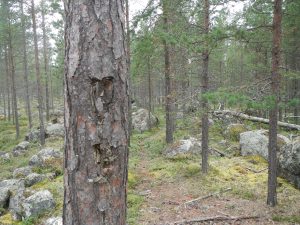
Heart carved into a pine tree at Kankiniemi / Männynkylkeen kaiverrettu sydän Kankiniemessä (Kuva: O. Seitsonen).
Inarin Kankiniemen sodanaikaisen saksalaisten vankileirin paikalle pystytetään muistoristi lauantaina 1.10.2016. klo 15 leirillä menehtyneiden muistoksi. Lapin ortodoksinen seurakunta ja joukko vapaaehtoisia pystyttävät ristin, ja samalla toimitetaan kolttatradition mukainen vainajien muistopalvelus. Tilaisuus on avoin yleisölle. Oula Seitsonen ja Vesa-Pekka Herva ottavat projektimme puolesta osaa tilaisuuteen.
Tutkimme Kankiniemen leiriä arkeologisin kartoituksin ja kaivauksin vuonna 2015: kaivauksissa tutkittiin kaksi roskakuoppaa ja joitain kivirakenteita. Erikoisena ilmiönä vankileirin piikkilanka-aidan ulkopuolelta, vartiopolun kulmasta löytyy männyn kylkeen kaiverrettu sydän.
Kankiniemen vankileiri toimi sodan aikana 1941–1944 metsätyöleirinä venäläisille sotavangeille, jotka työskentelivät eri puolilla Kankiniemen aluetta. Paikallisten arvion mukaan alueella oli n. 200 vankia. Paikalla on säilynyt jäänteitä useista hirsirakennuksista ja piikkilanka-aidasta, vaikka suurin osa piikkilangasta ja joitain hirsikehikoita on haettu pois jälleenrakennuksen yhteydessä.
Leirin lähistöltä vaaran päältä on löytynyt sodan jälkeen kaksi ortodoksiristeillä merkittyä hautaa, joista toisesta erottui vielä nimi “Viktorin Sukhov”. Poliisi oli tuolloin pyytänyt kaivamaan haudat auki ja toimittamaan vainajat Ivalon hautausmaalle sotavankien joukkohautaan.
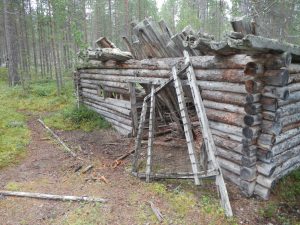
Kitchen of the PoW camp / Vankileirin keittiörakennus (Kuva: O. Seitsonen).

